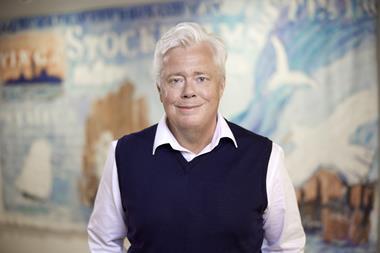Total assets in European occupational pension funds increased “significantly” in 2015, with asset allocation remaining broadly unchanged, according to the European Insurance and Occupational Pensions Authority (EIOPA).
The supervisory authority this week released its second half-year financial stability report for 2016, which includes a chapter capturing broad developments in the European occupational pension fund sector.
Much of the report is focused on the other part of EIOPA’s remit, the insurance and re-insurance sector.
It said the occupational pension fund market grew by 13.5% for the European Economic Area (EEA) in 2015 in terms of assets “owned” by the funds, and by 2.5% for the euro-zone; it did not state an absolute figure.
“This increase was partly caused by the drop in interest rates during 2015, which increased the market value of bond portfolios,” said EIOPA, noting that the UK and the Netherlands accounted for 83% of the European occupational pensions sector.
In most countries, the size of the occupational pension fund sector with respect to GDP – the penetration rate – grew in 2015 compared with 2014, according to the EIOPA report.
The ratio shrank in countries such as Ireland, the Netherlands and Finland.
EIOPA said the investment allocation for occupational pension funds – IORPs – had been “relatively stable” in the past three years.
Total exposure to bonds stood at 47% in 2015, and equities accounted for 28%.
Over a nine-year period, changes have been more substantial, however, according to EIOPA.
It said there had been a decline in equities from 46% to 28% based on data for 16 countries (accounting for 97% of assets in the EEA) for the period from 2007 to 2015.
“A possible explanation is the de-risking of investment portfolios in the UK,” it said.
It published its latest ‘Purple Book’ of DB scheme data this week, according to which private sector DB funds had an average fixed income allocation of 51.3% at the end of March.
EIOPA said cover ratios for European defined benefit (DB) schemes had decreased “and remain a big concern for a number of countries”, EIOPA said.
It put the average weighted cover ratio at 95% for 2015, down from 104%.
The number of IORPs in Europe fell further in 2015, decreasing by 3% versus 2014, while overall active membership increased by 7%.
EIOPA said the overall increase in active membership could be attributed “to a large extent to the (gradual) introduction of auto-enrolment in the UK”.
The Dutch regulator has predicted that some 100 fewer pension funds will exist in the Netherlands by the end of next year due to consolidation.
The information in the pension fund overview is based on feedback provided by EIOPA members, with data for 2014 provided to EIOPA “with an approximate view of the financial position of IORPs during the covered period”.
The supervisory authority said several countries were in the process of collecting data and that, in some cases, 2014 figures were incomplete or based on estimates that may be subject to major revisions in the coming months.
It noted that the main valuation method applied by each country varied due to differing accounting principles applied across the EU, and that data availability varied substantially, “which hampers a thorough analysis and comparison of the pension market developments between [EU] member states”.












No comments yet